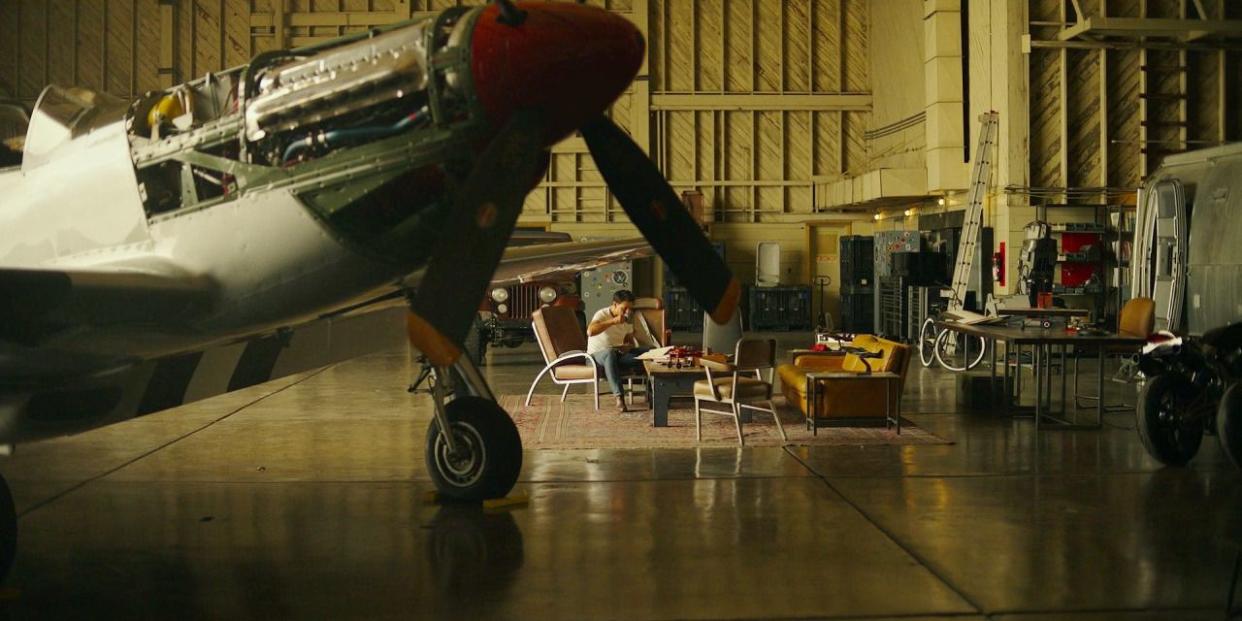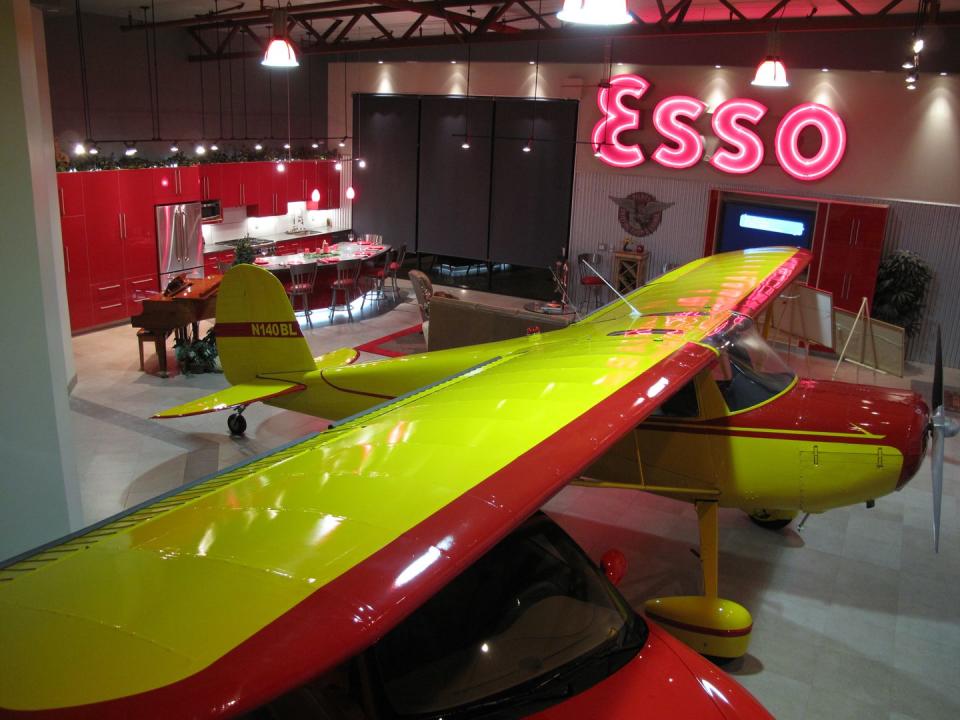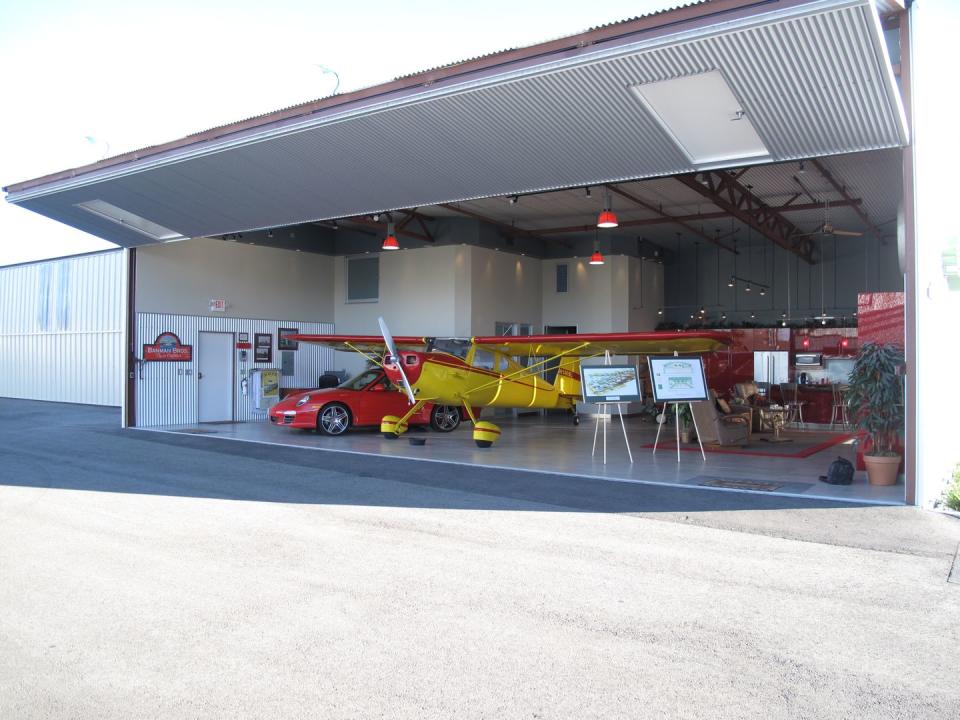Could You Actually Live in an Aircraft Hangar Like Top Gun's Maverick?

- Oops!Something went wrong.Please try again later.
If you, like many others, were captivated by the summer 2022 blockbuster Top Gun: Maverick, and you're a home buff like we are, you might've noticed one pretty cool detail in the film. Maverick, played by Tom Cruise, lives in the aircraft-lover's dream home: an aircraft hangar where he also parks his vintage World War II plane. (Fun fact: that P-51 Mustang actually belongs to Cruise, who earned his pilot's license after filming the original 1986 Top Gun.)
But is living in an aircraft hangar actually possible? Yes—but there are caveats.
"The challenges of building a live-work hangar all stem around local zoning codes," says architect James McGarry, who designed a live-work hangar called the Banman Hangar in Ventura County, California. Because that project is attached to a small, private suburban airport, the local zoning laws worked in his favor.

The bigger hurdle is the regulations set by the Federal Aviation Administration (FAA). "Federally funded and regulated airports do not allow hangars to be residences," says McGarry. Given that more than 1,000 airports were granted funding by the FAA in 2022, that eliminates quite a few opportunities for a hangar home.
The official FAA policy on non-aeronautical hangar use does, however, include a few residential exceptions. Notably, remote airports may have an "on-airport residence for a full-time airport manager, watchman, or airport operations staff."
And then there's this gray area in the policy: "The FAA differentiates between a typical pilot resting facility or aircrew quarters versus a hangar residence or hangar home. The former are designed to be used for overnight and/or resting periods for aircrew, and not as a permanent or even temporary residence."
So, technically, a pull-out couch, a mini fridge, and a TV might be acceptable under FAA regulations. Some anecdotal evidence exists to suggest that some pilots might toe the line between a residence and a resting facility in their hangars, but they likely are, if you'll pardon the pun, flying under the radar so as to avoid unwanted attention and investigation by the FAA.
Fortunately for wannabe Mavericks, there's a fully legal way to live in an aircraft hangar—and it's quite a popular one. All across the United States are hundreds of residential airparks or fly-in communities designed for pilots who want easy flying access. Some of the homes within these communities have built-in hangars, while others have detached ones on their property. But the most important factor is each of these airparks has a runway, which gives pilots practically unlimited access to the skies.
"The community—they drive around on golf carts, and they talk about airplanes. On the weekends, airplanes are taking off and coming in. These guys love this lifestyle," says aviation real estate specialist Erik McCormick, who operates a number of businesses revolving around airparks. "It's like if you're a pro surfer, and you can buy a home right on your favorite beach."
Some of these airparks are tiny, just two homes and a gravel runway, while others have dozens or even hundreds of homes and world-class aviation facilities. Spruce Creek in Florida, for instance, has more than 1,300 homes (though not all are true hangar homes), plus a private paved runway; its own golf course, tennis courts, and pickleball courts; and plenty of social clubs for residents to join.

Pricing for live-in hangar homes varies greatly. Scrolling through some listings in McCormick's Aviation Real Estate Digital Magazine, you can find a 3,600-square-foot hangar in Texas with a one-bed, one-bath apartment inside it listed at $3,450 per month, as well as a three-bedroom, six-bath estate in Colorado with a separate 3,233-square-foot hangar that's selling for $5.5 million. For most hangar home buyers, price isn't often an issue. "Usually it's their second or third or maybe their fifth home, and they just buy it," says McCormick.
While it makes most sense for hangar home buyers to actually own a plane and be able to fly it, non-pilot die-hard Top Gun fans could also live out their best Maverick dreams, too.
You Might Also Like

